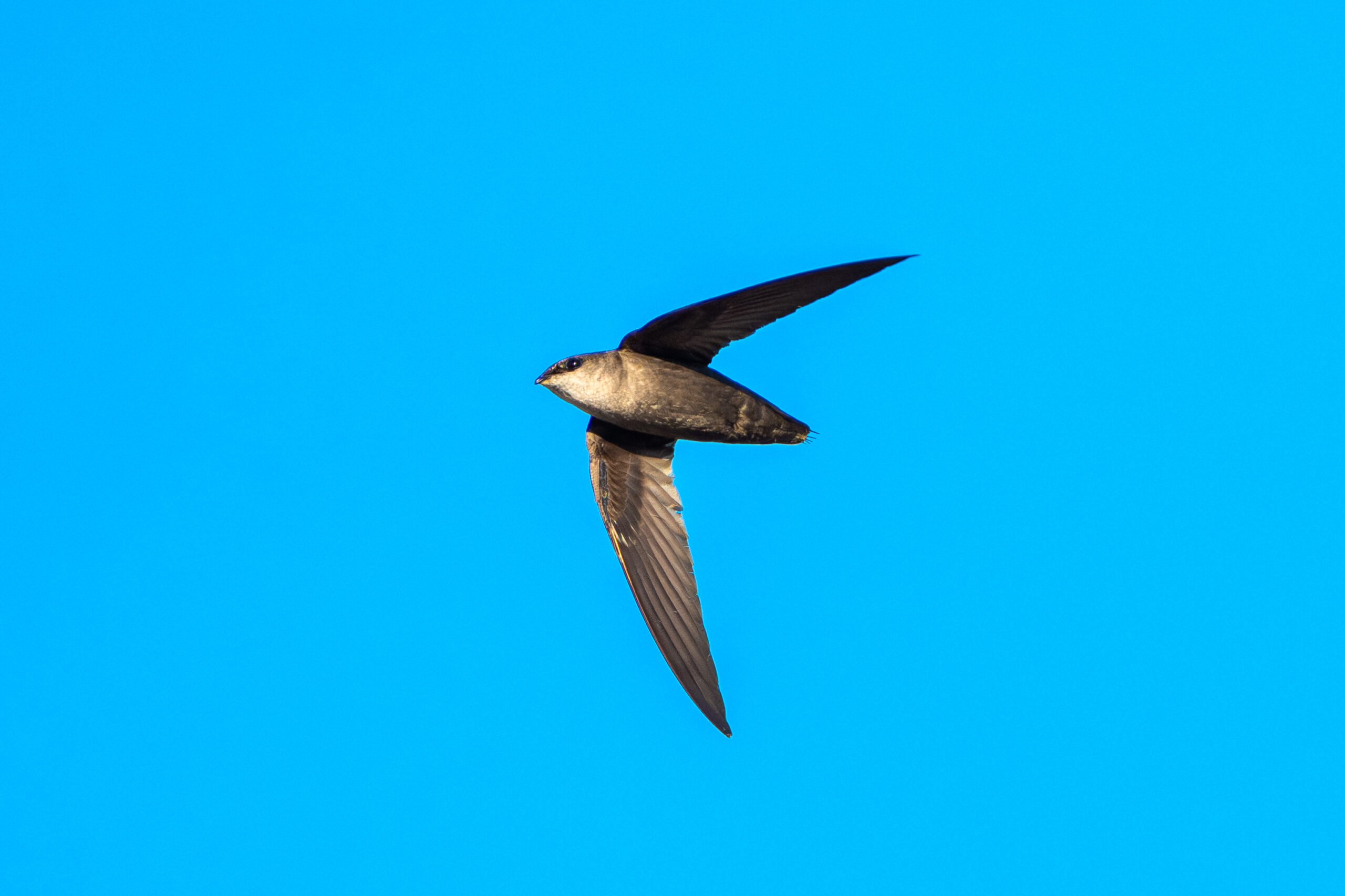
Two blank cheques: are Ontario and B.C. copying the homework?
Governments of the two provinces have eerily similar plans to give themselves new powers to...
You can hear the chimney swifts’ high-pitched twittering from the sidewalk. Darting through the evening sky, their rapid-fire chirp is easy to pick out — as soon as you know what to listen for.
Their cylindrical bodies — often likened to cigars — swoop as the sun eases toward the horizon. They feast on flying insects and inflect urban skylines in central and eastern Canada in the spring and summer.
Above downtown Peterborough, Ont., chimney swifts are a common sight and sound on summer evenings. Urban settings have become a surprising haven for the federally listed species at risk.

Since the 1970s, the population of chimney swifts in natural environments has declined by 90 per cent — with more than half of that decline happening in the past two decades.
In forests slated for logging in Ontario, the tree markers who designate which trees to cut and which to leave standing are trained to identify trees with large cavities suitable for chimney swifts to roost in. But it can take decades for trees to grow big enough.
The loss of old-growth forests in Canada is a threat to the birds, according to the federal recovery strategy for chimney swifts, as is logging trees before they grow large enough for spacious cavities to form.



Over the past few centuries, swifts have shifted to mostly roost in human-made structures like chimneys. In Peterborough, a few chimneys on neighbouring downtown buildings house nesting pairs, which prefer their own space. But those here to feed and rest, rather than pair up, roost in large groups — sometimes more than a thousand birds in a single chimney. Their chosen roost is a beige chimney hugged by a sumac branch, just off a main downtown artery. This chimney and others like it in Canada are protected by the Migratory Birds Convention Act as residences for the threatened species.

From the top level of a three-floor parking garage, a group of nine people gather to count and watch as the swifts circle and dive toward the chimneys. Some people bring lawn chairs, others just a pair of binoculars. Some are here for the joy of it, others for work.
On five evenings in late May and early June, Birds Canada takes count of the chimney swift population in eastern Canada based on numbers provided by folks like these. There are counts in towns and cities from Windsor, Ont., to Halifax, where people track the number of swifts flying into chimneys they’re known to frequent. (Other organizations also run counts in Manitoba and Quebec.) Last year, 1,170 surveys were conducted in Ontario and 269 across the maritimes, according to Birds Canada.
Sunset is 8:52 p.m. and within 10 minutes most swifts will be in the roost, Chris Risley, who has organized the gathering for the Peterborough Field Naturalists, says. There are rules around counts for Birds Canada, like waiting 15 minutes after sunset, should any slowpokes come to roost late, and arriving 15 minutes before — or earlier if there’s poor weather that sends the swifts to roost early.
The people gathered on the Peterborough parkade let out audible oohs and ahs as the swifts swoop and fake out the chimney.
“He’s thinking about it,” one person says.
“Oh, one just went in,” another says. They count out loud, often in unison.

Like in the forest, roosts in urban environments are also becoming scarce. Few homes are built with chimneys these days and those that still stand are being capped or removed. Towers have been built in Nova Scotia, Quebec and Manitoba to mimic the dwindling chimneys — but constructing enough to support the population isn’t feasible.

And there are further threats facing the acrobatic birds: the availability of insects to eat, due to pesticide use and climate change.
The federal recovery strategy for swifts suggests reducing the use of pesticides would in turn help insects — and swifts. But, the recovery strategy adds the threat of climate change could be more difficult to tackle. Climate change “might not be reduced quickly enough to ensure that a stable chimney swift population is achieved and maintained over the long term,” the strategy reads. And the weather changes predicted in swift breeding habitat in Canada — like hotter and hotter summer temperatures, as well as extreme weather conditions — could be bad news for the birds.



It’s estimated there are now between 20,000 and 70,000 adult swifts in Canada. The hope is that by protecting and restoring their nesting and roosting sites, as well as other measures, that population is maintained.
The birds circle and dupe the watchers, diving at a chimney and then back up for another bite. Once they’ve had their fill, they enter the chimney in succession, looking like a cascade of fluttering leaves pouring down.

Across Ontario last year, Birds Canada logged 35,286 swifts entering chimneys. One of the most popular sites for swifts in the province is a decommissioned nuclear ventilation stack in Rolphton, where more than 2,500 swifts entered in 2014 and nearly 1,000 last year.
Numbers this year in Peterborough have been similar to last, Risley says, with a peak of 185 roosting chimney swifts in 2023.
On June 3, about 100 roosted in the main chimney in Peterborough and a few others paired off nearby (official counts won’t be released by Birds Canada until December) — a few less than a week earlier when the group counted more than 160 birds. On that evening, Risley says, a second wave of swifts came after they thought all had entered.
The onlookers wait a few extra minutes. The skies are clear and quiet by 9:20 p.m.

